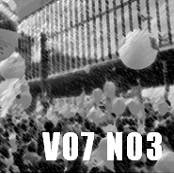Abstract
Considering the importance of solar radiation control and daylighting admission on buildings performance, the solar control devices when properly used can significantly contribute to the comfort and energy efficiency in the built environment. At the same time can be highlighted in contemporary architectural production the growing influence of digital tools associated to the design process. In this context, this research aims to analyze the solar radiation admission and daylighting performance of solar control devices developed with parametric modeling and evolutionary algorithms. The methodology was organized in four steps: (1) parametric modeling of solar control devices; (2) computational simulations regarding the solar radiation admission and daylighting performance; (3) optimization using evolutionary algorithms and (4) analysis of shading masks generated by computational simulation. The computational tools used were: the parametric modeling suite Rhinoceros3D+Grasshopper, the environmental performance plug-in Diva-for-Rhino, the evolutionary algorithms tool Galapagos Evolutionary Solver and the solar geometry tools of the Ladybug plug-in. The results demonstrate that the developed elements were able to selectively control the solar radiation admission and improve the daylight distribution in the analysis environment; highlighting respectively the importance of directional and horizontal components. Finally, in addition to the results of computational simulations, the shading masks shows that the solar geometry understanding is essential for solar control devices performance.
References
BADER, S. High-Performance Facades for Commercial Buildings. Austin, Texas: The University of Texas at Austin, 2010.
CASTLE, H. Editorial – Computation Works: The Building of Algorithmic Thought. Architectural Design, v. 83, n. 2, p. 5, 2013.
CHO, J.; YOO, C.; KIM, Y. Viability of Exterior Shading Devices for High-Rise Residential Buildings: Case Study for Cooling Energy Saving and Economic Feasibility Analysis. Energy & Buildings, v. 82, p. 771-785, 2014. http://dx.doi.org/10.1016/j.enbuild.2014.07.092
DUNN, N. Digital Fabrication in Architecture. London: Laurence King Publishing, 2012. 192 p.
FAJKUS, M. Superficial Skins? Super Skins? Shading Structures and Thermal Impact Analysis. In: ADVANCED BUILDING SKINS – ENERGY FORUM, 2013, Bressanone, Italy. Proceedings... Bressanone: 2013. pp. 187-193.
GADELHAK, M. Integrating Computational and Building Performance Simulation Techniques for Optimized Facade Designs. In: INTERNATIONAL ECAADE CONFERENCE – EDUCATION AND RESEARCH IN COMPUTER AIDED ARCHITECTURAL DESIGN IN EUROPE, 31., 2013, Delft, Holanda. Anais... Delft: eCAADe, 2013. pp. 261 – 270.
GLASSMAN, E.; REINHART, C. Facade Optimization using Parametric Design and Future Climate Scenarios. In: CONFERENCE OF INTERNATIONAL BUILDING PERFORMANCE SIMULATION ASSOCIATION, 13., 2013, Chambéry, France. Anais... Chambéry: 2013. pp. 1585 – 1592.
JAKUBIEC, J.; REINHART, C. The “Adaptive Zone”: A Concept for Assessing Discomfort Glare throughout Daylit Spaces. Lighting Research and Technology, v. 44, n. 2, p. 149-170, 2012.
KOLAREVIC, B.; MALKAWI, A. Performative Architecture beyond Instrumentality. New York: Spoon Press, 2005.
MONEDERO, J. Parametric Design: A Review and some Experiences. Automation in Construction, v. 9, n. 4, p. 369-377, 2000. http://dx.doi.org/10.1016/S0926-5805(99)00020-5
NABIL, A.; MARDALJEVIC, J. Useful Daylight Illuminances: A Replacement for Daylight Factors. Energy and Buildings, v. 38, n. 7, p. 905-913, 2006. http://dx.doi.org/10.1016/j.enbuild.2006.03.013
REINHART, C. F.; WIENOLD, J. The Daylighting Dashboard – A Simulation-Based Design Analysis for Daylit Spaces. Building and Environment, v. 46, n. 2, p. 386-396, 2011. http://dx.doi.org/10.1016/j.buildenv.2010.08.001
REINHART, F, C.; MARDALJEVIC, J.; ROGERS, Z. Dynamic Daylight Performance Metrics for Sustainable Building Design. Leukos, v. 3, n. 1, p. 7-31, 2006.
REPPERT, S. M.; WEAVER, D. R. Coordination of Circadian Timing in Mammals. Nature, v. 418, n. 6.901, p. 935-941, 2002. https://doi.org/10.1038/nature00965
RUTTEN, D. Galapagos: On the Logic and Limitations of Generic Solvers. Architectural Design, v. 83, n. 2, p. 132-135, 2013.
SEDREZ, Maycon; MENEGHEL, Rafael de Moraes. Projeto paramétrico com fractais no detalhamento de uma fachada. PARC Pesquisa em Arquitetura e Construção, Campinas, SP, v. 4, n. 2, p. 22-29, dez. 2013. ISSN 1980-6809. doi:http://dx.doi.org/10.20396/parc.v4i2.8634548.
TERZIDIS, K. Algorithmic Architecture. Burlington: Architectural Press, 2006.
I accept that PARC Research in Architecture and Building Construction journal perform, on the original file approved for publication, revisions and modifications in orthoghaphic, grammar and standard issues.
I give to PARC Research in Architecture and Building Construction journal the rights of first publication of the revised version of my paper, licensed under the 'Creative Commons Attribution' license (which allows sharing the work with the recognition of first authorship and publication in this journal).

